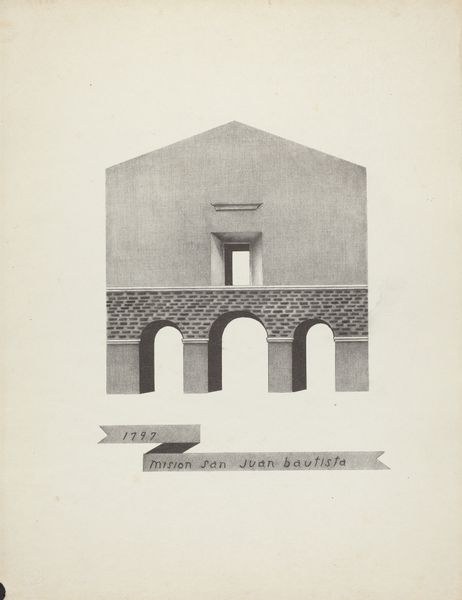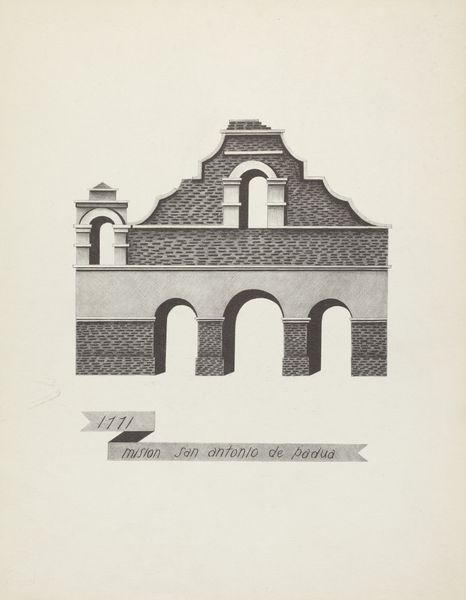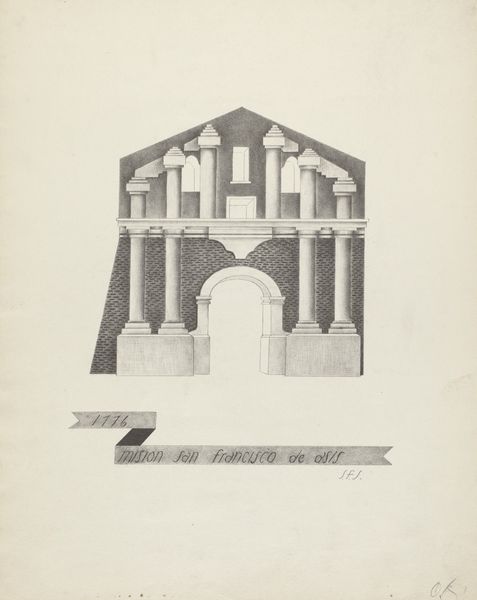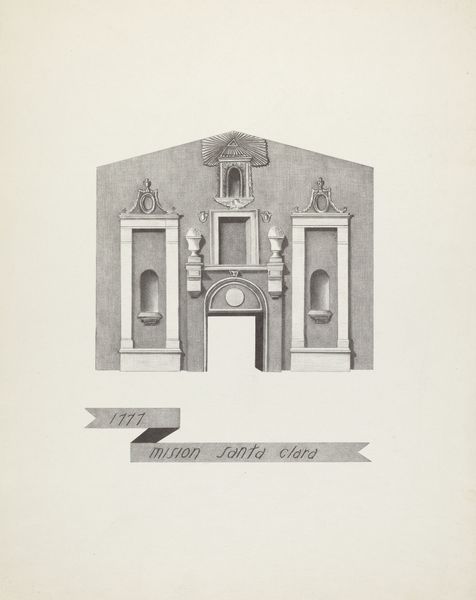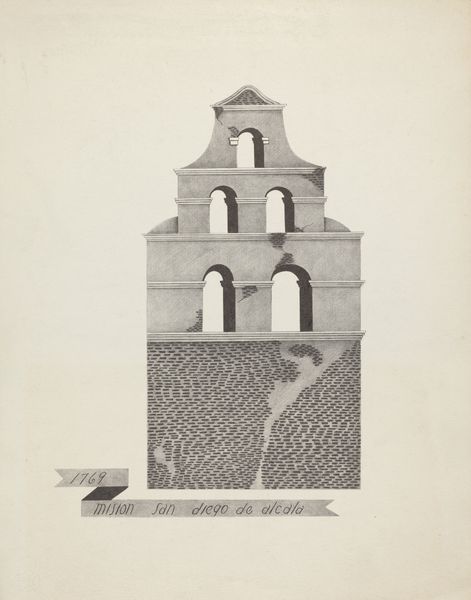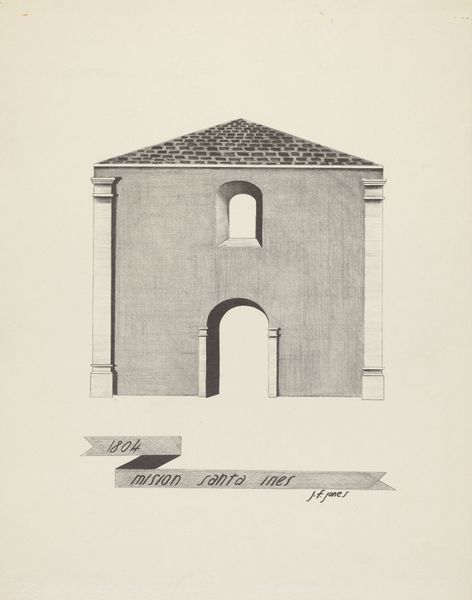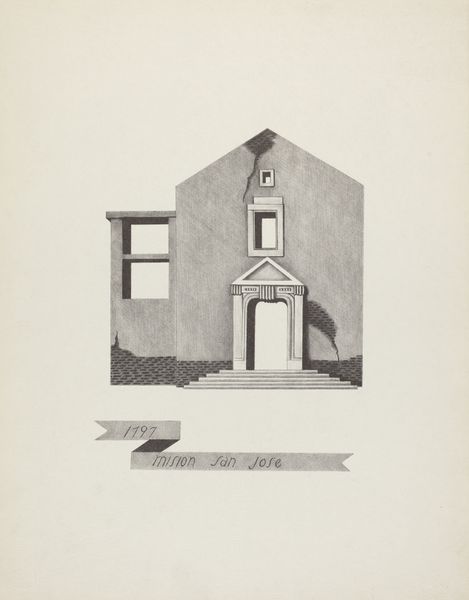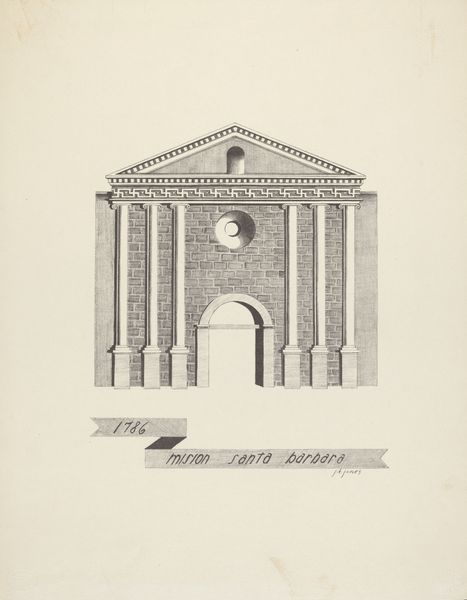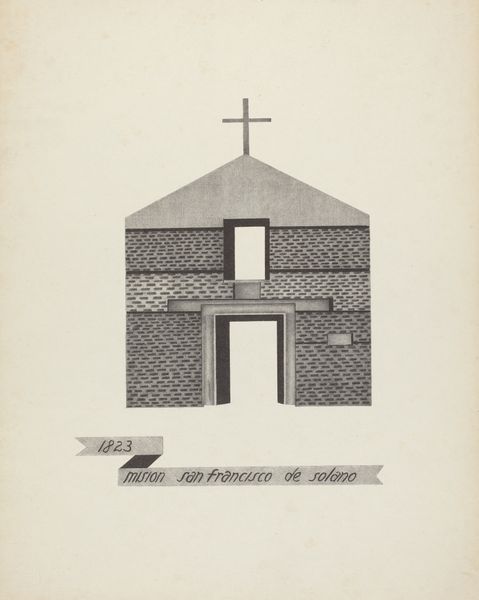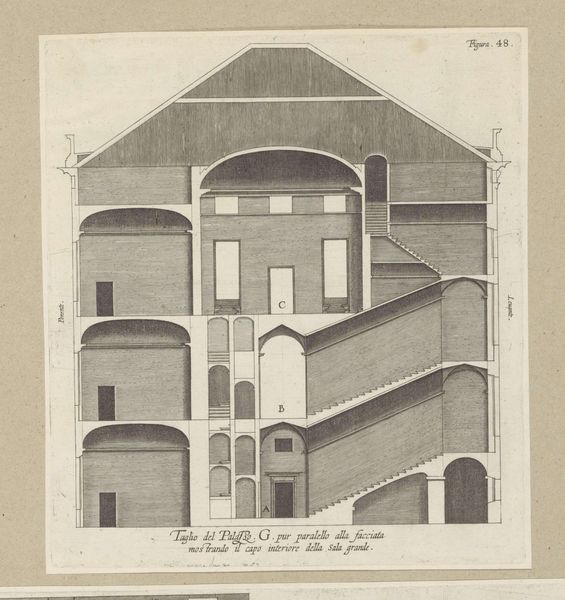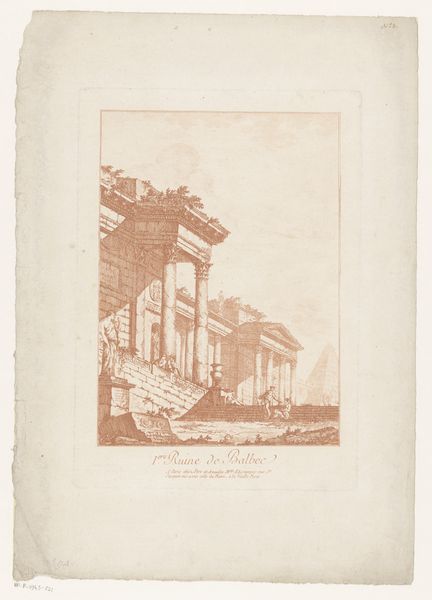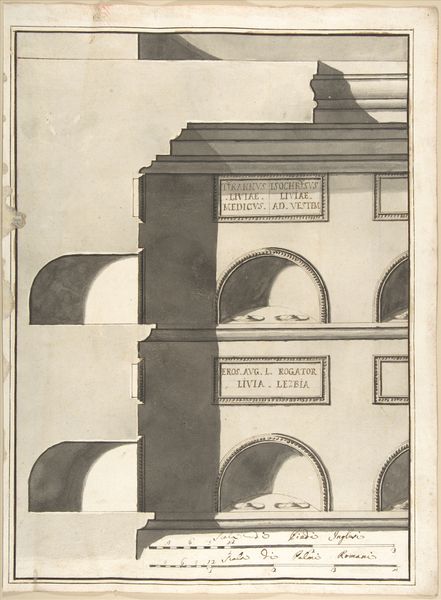
drawing, architecture
#
pencil drawn
#
drawing
#
pencil drawing
#
geometric
#
architecture
#
realism
Dimensions: overall: 31.8 x 24.9 cm (12 1/2 x 9 13/16 in.)
Copyright: National Gallery of Art: CC0 1.0
Editor: Here we have James Jones's "Mision San Gabriel Arcangel," a pencil drawing created between 1935 and 1942. What strikes me most is the detailed rendering of the brickwork, but also the depiction of deterioration, which creates a rather melancholy mood. What do you see in this piece? Curator: For me, it’s about the process of documentation itself. Jones meticulously recorded the architectural details using humble materials. Look at the tension between the labor-intensive pencil work versus the mass-produced brick – consider the economics of building the mission versus drawing it decades later. How does the drawing function as a commodity versus the function of the Mission itself? Editor: That's fascinating. I hadn’t considered the social implications of depicting the Mission in that way. Do you mean like, is it an artifact in and of itself because someone chose to represent it so meticulously? Curator: Exactly. The architectural drawing itself becomes an object, a thing bought or sold, circulated, while also representing an important historical landmark. Think about who had access to such renderings and why they would want it? This shifts it from being simply a religious monument to a symbol of, perhaps, cultural power or tourism, ripe for consumption. Who benefitted from that transaction of drawing for money, versus its original use? Editor: So, you are not simply admiring it as an image but digging into all the production, social dynamics and economies of making this drawing? And what do you make of its aged look? Curator: The depiction of decay reinforces the commodification aspect. Ruin has often been romanticized, and become a marker of a lost, or unattainable past – so whose “past” are we looking at? By focusing on these specific details – process, labor, material – the drawing asks questions beyond just architectural aesthetics. It asks about social dynamics as expressed by cultural objects. Editor: I see your point. Looking at the art materials used – paper, pencil, the time taken to record it, along with its social context of production really allows us to explore further dimensions beyond the architecture itself. Thanks! Curator: Precisely. The drawing becomes a window into labor, materials, and systems of exchange and power, all bound within this humble drawing.
Comments
No comments
Be the first to comment and join the conversation on the ultimate creative platform.
